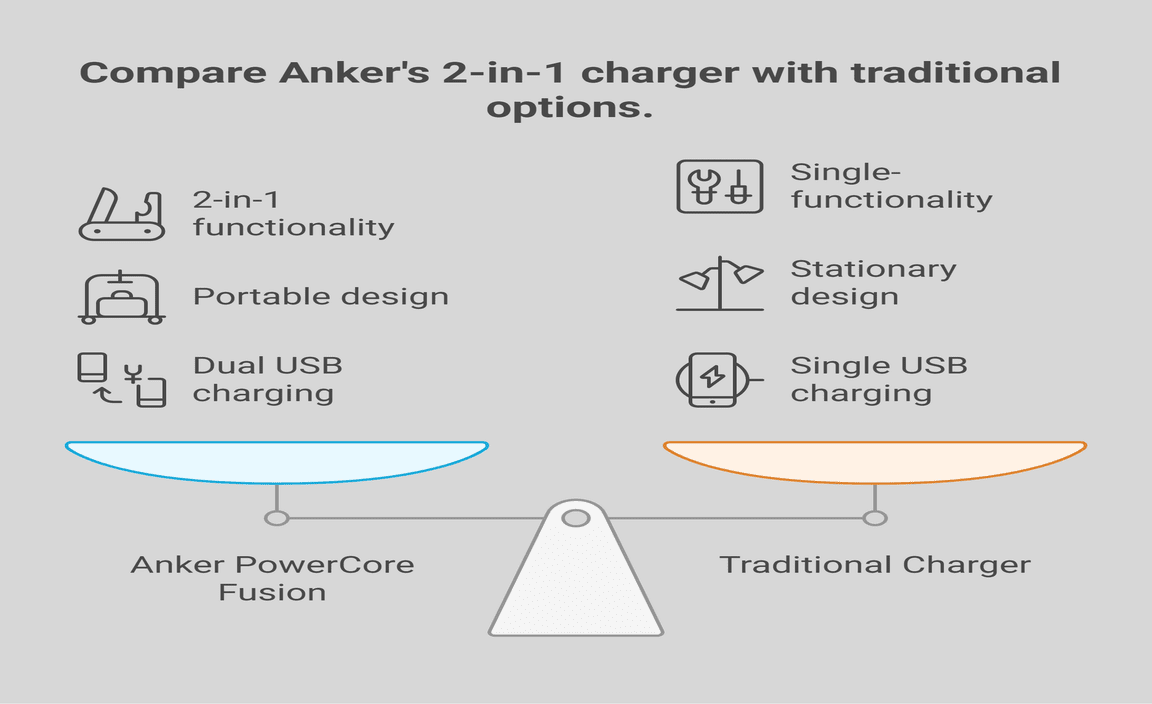Quick Summary: A quick disconnect for your car battery is an essential safety device. It allows you to instantly cut power to your vehicle, preventing electrical issues, protecting against theft, and making maintenance much safer and easier. Installing one is straightforward and highly recommended for every car owner.
Ever worried about your car battery acting up, or just want to make sure everything is safe when you’re working on it? You’re not alone. Dealing with car batteries can seem a bit daunting, but it doesn’t have to be. One simple, brilliant tool that can give you peace of mind and boost safety is a quick disconnect for your car battery.
This handy device acts like an emergency off-switch for your car’s electrical system. It’s incredibly useful for a variety of situations, from routine maintenance to protecting your car when it’s parked for a while. We’ll guide you through what it is, why you need one, and how easy it can be to get one set up on your car.
Think of it as a safety net for your car’s power. By the end of this guide, you’ll understand exactly how a quick disconnect works and feel confident about its role in keeping your vehicle and yourself safe. Let’s dive in and make battery management simpler and safer!
What is a Car Battery Quick Disconnect?
A car battery quick disconnect, sometimes called a battery shut-off switch or battery isolator, is a simple yet clever device. Its main job is to allow you to easily and instantly disconnect your car’s battery from the rest of the electrical system. Imagine a light switch, but for your car’s power. With a few turns of a dial or a flip of a lever, you can completely shut off the flow of electricity from the battery.
This is fundamentally different from just loosening a battery terminal clamp with a wrench. A quick disconnect is designed for speed and ease of use, often requiring only a quarter turn or a single motion to break the connection. This makes safety paramount, as it can be done in seconds if an emergency arises.
When installed correctly, it attaches directly to the car battery’s positive terminal, and the car’s main power cable connects to the quick disconnect itself. This means that by operating the disconnect, you are interrupting the very first point of electrical contact from the battery.
Why You Need a Quick Disconnect for Your Car Battery: Essential Safety Benefits
Having a quick disconnect for your car battery isn’t just a fancy gadget; it’s a smart safety measure that offers several significant advantages. These benefits range from protecting your vehicle to ensuring your own well-being during maintenance tasks.
1. Enhanced Safety During Maintenance and Repairs
Working on your car’s electrical system can be risky if power is flowing. A stray tool could easily bridge a gap and cause a short circuit, leading to sparks, damage, or even a fire. With a quick disconnect, you can instantly cut all power to the vehicle. This makes tasks like replacing alternators, starters, or even just cleaning battery terminals much safer. You can be sure that no electricity is flowing, eliminating the risk of accidental shorts.
Consider a scenario where you’re replacing a component. Normally, you’d have to unhook the battery terminals with a wrench, which can be fiddly and might leave them slightly vulnerable. A quick disconnect offers a clear, deliberate way to isolate the battery, giving you complete peace of mind that the system is dead before you start probing around with wires and tools.
2. Prevents Battery Drain When the Vehicle is Stored
Many modern cars have a small but constant drain on their batteries, even when shut off. This is due to things like the clock, alarm system, radio memory, and onboard computers that need a little bit of power to remain active. If your car sits unused for extended periods – a few weeks, a month, or even longer – this constant drain can slowly deplete the battery, leading to a dead car battery and a lot of frustration.
A quick disconnect allows you to completely shut off the electrical system when storing your vehicle. This effectively stops any power draw from the battery, ensuring it stays charged and ready to go when you need it again. This is especially useful for:
- Classic cars or hobby vehicles that aren’t driven daily.
- Cars that are stored for the winter or for long trips.
- Any vehicle that tends to sit idle for a week or more.
3. Protection Against Accidental Short Circuits
Sometimes, accidents happen. A loose wire might come into contact with the metal chassis of your car, or a tool might slip while you’re working under the hood. Without a quick disconnect, such an event can cause a significant short circuit. This can lead to blown fuses, damaged electronics, or, in the worst-case scenario, a battery fire. A quick disconnect acts as an immediate barrier, preventing the flow of high current that causes such damage.
The ability to sever the connection instantly is a critical safety feature. It’s like having an emergency brake for your car’s electrical system. If you suspect something is wrong, or if you see or smell something unusual related to the electrical system, you can immediately disconnect the battery, preventing potential harm or damage.
4. Theft Deterrent
While not their primary function, quick disconnects can also act as a basic form of theft deterrence. If a car thief can’t easily access the battery or is presented with a main power shut-off, it can make stealing the vehicle more difficult and time-consuming. For a thief looking for a quick grab, a car that requires extra steps to get running might be less attractive.
This benefit is more of a secondary advantage, but it’s still a good one to consider, especially for vehicles parked in less secure locations. It’s an added layer of protection that doesn’t require much effort to implement.
5. Easier Battery Removal
If you need to remove your car battery for testing, replacement, or deep cleaning, a quick disconnect simplifies the process significantly. Instead of fumbling with wrenches to loosen and remove the terminal clamps, you simply operate the disconnect switch. This not only saves time but also reduces the risk of dropping tools or causing accidental sparks during the removal process.
Types of Car Battery Quick Disconnects
When you start looking for a quick disconnect, you’ll find a few main types. They all serve the same purpose – to cut power – but they operate slightly differently and have different mounting styles. Understanding these differences can help you choose the best one for your car and your comfort level.
1. Rotary Style (Knob/Lever) Disconnects
These are perhaps the most common type you’ll see. They typically mount directly onto the negative battery terminal. The disconnect itself has a removable key or a knob that you turn. When the key/knob is in one position (usually aligned with the cable), the circuit is complete. When you turn it to the “off” position (often 90 degrees), it breaks the connection.
- Pros: Very simple to operate, visually clear when the power is on or off, and widely available. The removable key can add an extra layer of security.
- Cons: Requires access to the battery terminals. Can sometimes be bulky.
2. Blade Style Disconnects
These work similarly to a light switch. You have a lever that you flip up or down. When the lever is down (or in the “on” position), the electrical circuit is connected. When you flip the lever up (to the “off” position), it physically separates a small metal blade from a contact point, breaking the circuit.
- Pros: Very intuitive to use. The position of the lever clearly indicates whether the system is connected or disconnected.
- Cons: The lever might be more exposed to damage or accidental bumping than a knob.
3. Bolt-On Style Disconnects
This type is a bit more permanent than a simple knob or lever, but still provides a quick disconnect function. It typically involves a base that bolts onto the battery terminal, and then a separate piece that bolts onto that base, with a connection point for the car’s main cable. You then use a bolt or a wingnut to secure or release this connection.
- Pros: Very secure connection when engaged. Less likely to be accidentally disengaged.
- Cons: May require a tool (like a wrench or wingnut) to operate, making it slightly less “quick” than other types.
4. Inline Disconnects
These are designed to be incorporated into the battery cable itself. Instead of mounting directly onto the battery terminal, they are installed somewhere along the main positive battery cable run. They often have a rotary or lever mechanism. This can be beneficial if battery terminal access is tricky.
- Pros: Can be installed in a more accessible location. Offers flexibility in placement.
- Cons: Installation can be more complex, potentially requiring cutting and crimping battery cables.
5. Remote-Controlled or Solenoid Disconnects
These are more advanced systems. They use an electrical solenoid that is controlled by a switch inside the car, often a button or a key fob. When you press the button or use the fob, it signals the solenoid to open or close the circuit.
- Pros: Extremely convenient, as you can disconnect power from the driver’s seat. Can be integrated with alarm systems.
- Cons: Most expensive and complex to install. Requires wiring into the car’s electrical system.
For most DIYers and everyday drivers, the rotary style or blade style disconnects are the easiest and most practical choices. They offer a great balance of safety, convenience, and affordability.
Tools and Materials You’ll Need
Before you start, gather your tools and materials. Having everything ready will make the installation process smooth and efficient. The exact needs might vary slightly depending on the type of disconnect you choose, but this list covers the essentials for a typical rotary or blade style installation.
Essential Tools:
- Socket Wrench Set or Combination Wrenches: You’ll likely need a few sizes, commonly 10mm, 13mm, and maybe 1/2 inch, for battery terminals and mounting bolts.
- Wire Brush or Battery Terminal Cleaner: To ensure a clean, solid connection.
- Pliers: May be useful for gripping or manipulating small parts.
- Safety Glasses: Absolutely crucial to protect your eyes from any potential sparks or debris.
- Gloves: Insulated gloves are recommended for handling battery terminals and to keep your hands clean.
- Torque Wrench (Optional but Recommended): For ensuring battery terminals and disconnect parts are tightened to the correct specification, preventing over-tightening which can damage the battery or connections.
Materials:
- Car Battery Quick Disconnect Switch: Choose the type that best suits your needs (rotary, blade, etc.). Ensure it’s designed for automotive use.
- Replacement Battery Terminal Clamp (if needed): Sometimes, the original clamp you remove needs to be replaced with one that fits the quick disconnect.
- Anti-Corrosion Battery Terminal Spray or Grease: To prevent corrosion and ensure good electrical contact.
- Dielectric Grease (Optional): Can be applied to electrical connectors for weatherproofing.
When purchasing your quick disconnect, make sure it’s rated for the amperage of your car’s electrical system. Most standard car batteries and electrical systems fall within the range of typical automotive quick disconnects, but it’s always good practice to check the specifications.
Step-by-Step Guide: How to Install a Car Battery Quick Disconnect
Installing a quick disconnect is a rewarding DIY project that enhances your car’s safety. This guide focuses on the most common installation: a rotary style disconnect that mounts on the negative terminal. Always prioritize safety by disconnecting the battery itself first.
Important Note: If your car has complex electronics, like advanced navigation systems or anti-theft devices that require a specific unlock code after power loss, consult your vehicle’s manual. Some systems might be reset by this installation. For most vehicles, this is not an issue.
Step 1: Prepare Your Workspace and Ensure Safety
Park your car on a level surface, engage the parking brake, and turn off the engine. Open the hood and locate your car battery. Ensure you have adequate lighting and ventilation.
Crucially, put on your safety glasses and gloves.
Step 2: Disconnect the Existing Battery Terminal
Identify the negative (-) battery terminal (usually black or marked with a minus sign). Using your socket wrench or combination wrench, loosen the nut on the battery clamp that connects to the negative terminal. Once loose, carefully twist and pull the negative battery cable clamp off the battery post. Move this cable completely away from the terminal to prevent accidental contact.
Why disconnect in this order? Always disconnect the negative terminal first. If your wrench were to accidentally touch the car’s metal body while on the negative terminal, nothing would happen. If you were on the positive terminal, and your wrench touched the body, you’d create a short circuit.
Step 3: Install the Quick Disconnect Adapter
Your quick disconnect will likely have a threaded bolt designed to connect to the battery post. It might also come with its own clamp or adapter piece.
For a rotary disconnect that replaces the clamp:
- Most rotary disconnects have a bolt that screws directly onto the battery post. Some may require you to remove the original negative clamp and attach a new one that integrates with the disconnect switch.
- Ensure the battery post is clean. Apply a small amount of anti-corrosion spray or grease to the battery post.
- Thread the main body of the quick disconnect onto the negative battery post. Tighten it securely by hand or with a wrench according to the manufacturer’s instructions. Do not overtighten.
For a disconnect that clamps onto the battery post:
- Clean the negative battery post thoroughly with a wire brush.
- Place the quick disconnect clamp directly onto the negative battery post.
- Tighten the clamp’s securing nut firmly with your wrench.
Step 4: Connect the Vehicle’s Negative Cable to the Disconnect
Now, take the original negative battery cable you removed from the battery post. This cable needs to connect to the quick disconnect switch itself.
- Most quick disconnects have a bolt or terminal stud protruding from the switch mechanism.
- Place the original negative battery cable’s clamp onto this stud.
- Secure the cable to the disconnect switch using the nut and washer provided with the disconnect kit. Tighten this connection firmly to ensure good electrical contact. Again, avoid overtightening.
Step 5: Connect the Positive Terminal
The positive (+) battery terminal (usually red or marked with a plus sign) is typically left untouched unless your quick disconnect kit specifically requires modification there, which is rare for standard negative-terminal mounts. Ensure the positive terminal is clean and the cable clamp is snug.
Step 6: Test the Quick Disconnect
With the negative battery cable now connected to the quick disconnect and the disconnect switch in the “off” or disconnected position (e.g., key turned to a different position, lever flipped up), attempt to start your car. The engine should not crank, and no lights or accessories should power up. This confirms the disconnect is working.
Now, turn the quick disconnect switch to the “on” position (e.g., key aligned with the cable, lever flipped down). Try starting your car again. The engine should crank and start normally.
Step 7: Apply Anti-Corrosion Protection
Once you’ve confirmed everything is working correctly, apply a thin layer of anti-corrosion spray or grease to all exposed terminal connections, including the positive terminal and the connection points on the quick disconnect. This helps prevent corrosion, which can degrade electrical connections over time and reduce battery performance.
Step 8: Secure and Tidy Up
Make sure all cables are routed neatly and are not rubbing against any moving parts or sharp edges under the hood. Ensure the hood closes properly without obstruction. Double-check that all nuts and bolts are tight.
Congratulations! You’ve successfully installed a car battery quick disconnect, significantly enhancing the safety and convenience of your vehicle’s power management.
Troubleshooting Common Issues
While installing a quick disconnect is usually straightforward, you might run into a few snags. Here’s how to tackle some common problems.
Car Won’t Start After Installation
- Issue: You’ve installed the disconnect, but the car won’t crank or show any signs of life, even when the disconnect is in the “on” position.
- Solution:
- Check the disconnect switch itself: Is it fully in the “on” position? Sometimes a lever or knob can feel like it’s engaged but isn’t making full contact.
- Check all connections: Ensure the negative cable is firmly attached to the disconnect switch and the disconnect is firmly attached to the battery post. Loosen, clean, and re-tighten these connections.
- Check the positive terminal: Make sure the positive battery cable is securely attached to the positive





